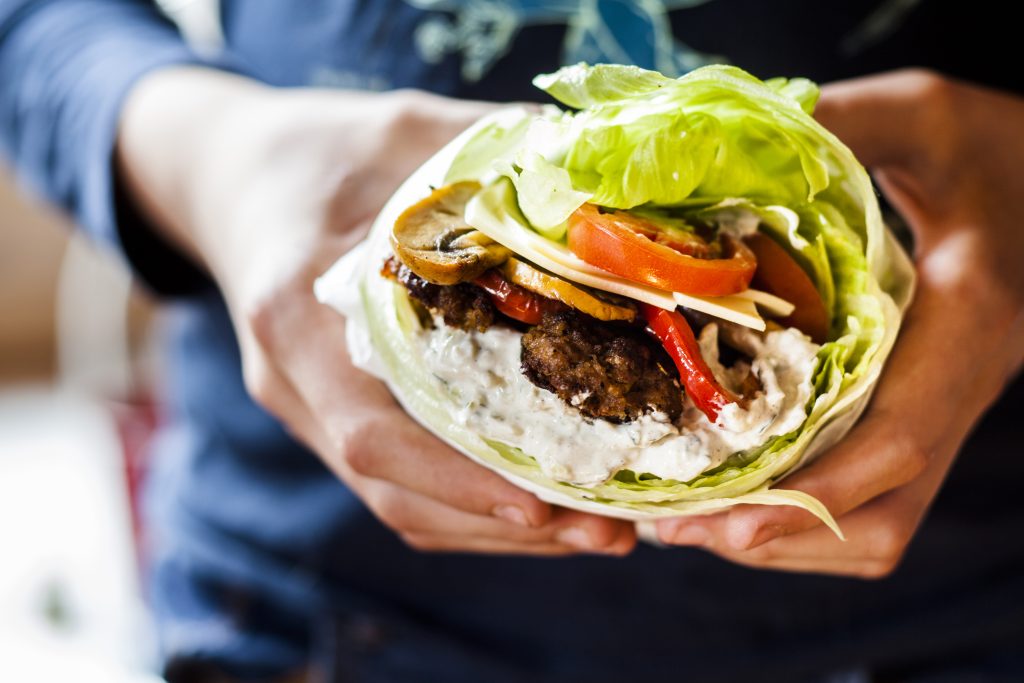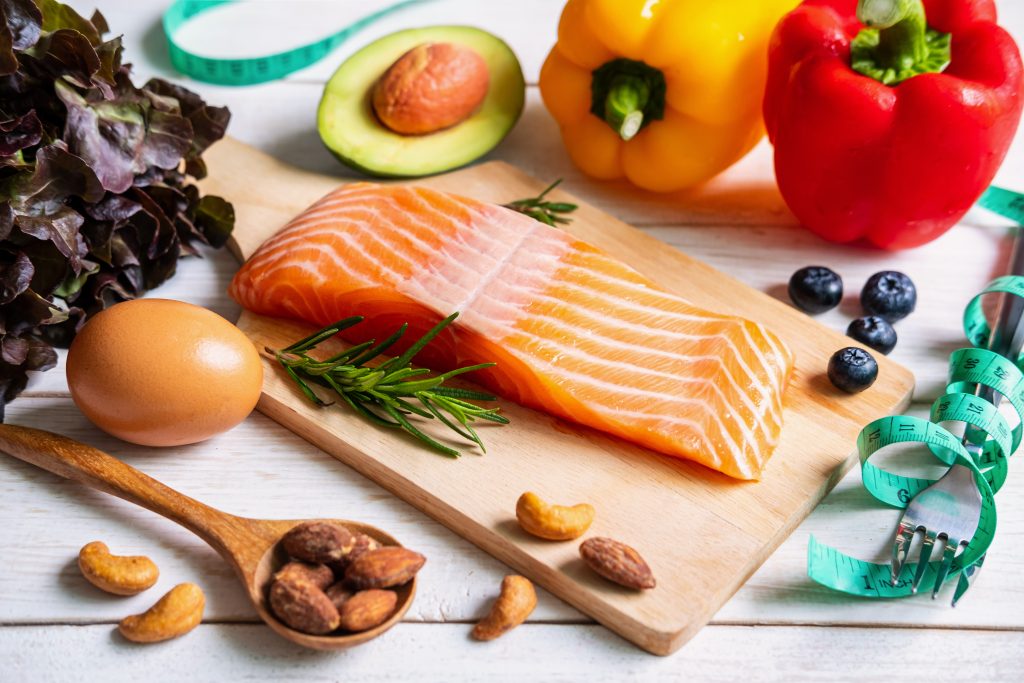The Ketogenic Diet, or keto as it’s more commonly known, has gained significant traction in recent years. Its promise? Weight loss achieved not by counting calories but by shifting your food intake to high-fat, low-carbohydrate foods. As counterintuitive as it may seem, this dietary approach has helped many shed their unwanted pounds and improve their overall health. To help you learn more, this post will delve into the science of the Ketogenic Diet, explore how to lose weight with the practice and provide practical tips for those considering this lifestyle change.
Contents
- 1 Understanding the Ketogenic Diet
- 2 How to Lose Weight With The Ketogenic Diet
- 3 Foods to Emphasize
- 4 Foods to Avoid
- 5 Meal Planning and Preparation
- 6 Addressing Common Challenges and Misconceptions
- 7 Monitoring Your Progress
- 8 Ensuring Long-Term Success
- 9 The Ketogenic Diet May Be The Answer To How To Lose Weight!
Understanding the Ketogenic Diet
The Ketogenic Diet, at its core, is all about altering your body’s primary source of energy. Typically, your body runs on glucose derived from carbohydrates. However, when you significantly reduce your carb intake, your body is forced to find an alternative fuel source. This is where the magic of the Ketogenic Diet lies: your body turns to stored fat, breaking it down into molecules called ketones, hence the name of the diet.
Following the Ketogenic Diet means consuming high quantities of healthy fats, moderate protein, and very few carbohydrates. This ratio triggers the metabolic state of ketosis, where your body efficiently burns fat for energy. The diet is unique in its approach, flipping the traditional food pyramid on its head.
How to Lose Weight With The Ketogenic Diet
The Ketogenic Diet aids weight loss primarily by promoting ketosis, a metabolic state in which your body burns fat more efficiently. Many people find that the diet also helps reduce appetite, making it easier to consume fewer calories without feeling hungry. The key to achieving and maintaining ketosis is careful management of your macronutrient intake—particularly limiting carbohydrates.
In addition to monitoring your carb intake, other practices can enhance your body’s ability to reach and maintain ketosis. For instance, incorporating periods of intermittent fasting can give your body more time to use up its glycogen stores and start burning fat. Physical activity can also help, particularly exercises that deplete glycogen stores, like high-intensity interval training (HIIT) and strength training.
Foods to Emphasize
What does a typical Ketogenic Diet plate look like? Think of a generous serving of healthy fats like avocados, nuts, seeds, and olive oil. Pair that with moderate amounts of protein from sources like eggs, meat, and fish. Finally, complete the meal with a variety of low-carb vegetables, such as leafy greens, broccoli, and zucchini.
While it’s important to focus on high-fat, low-carb foods, the quality of these foods matters too. Aim for whole, unprocessed foods whenever possible. For instance, opt for grass-fed meat, wild-caught fish, and organic vegetables. These choices will not only support your weight loss goals but will also contribute to your overall health.
Foods to Avoid
When following the Ketogenic Diet, certain foods can hinder your progress. High-carb foods such as grains, legumes, sugar, and most fruits should be limited or eliminated. These foods can quickly exceed your daily carb limit and knock you out of ketosis, halting fat burning and weight loss.
It is also important to remember not all fats are created equal. While the Ketogenic Diet is high in fats, you should still avoid unhealthy fats like those found in processed foods, fried foods, and certain oils like canola and soybean oil. These types of fats can contribute to inflammation and other health problems ranging from diabetes to heart disease.
Meal Planning and Preparation
Meal planning is key to succeeding on the Ketogenic Diet. This can involve preparing Keto-friendly meals in advance, batch cooking, or simply having a plan before you hit the grocery store. Meal prep not only helps you stay on track but also reduces the chance of impulsive, non-keto food choices when hunger strikes.
To keep your meals interesting and satisfying, don’t be afraid to experiment with different recipes. There are countless keto-friendly recipes available online, ranging from simple dishes like grilled salmon with asparagus to more adventurous ones like cauliflower crust pizza. Remember, variety is the spice of life, even on the Ketogenic Diet!
Addressing Common Challenges and Misconceptions
As with any significant lifestyle change, you may face challenges when transitioning to the Ketogenic Diet. Some individuals experience what’s known as the “keto flu,” a temporary condition with symptoms like fatigue, nausea, and headaches. Rest assured, these symptoms usually pass within a week as your body adjusts to its new fuel source.
Furthermore, misconceptions about the Ketogenic Diet abound. One common myth is that consuming high amounts of saturated fat will lead to high cholesterol levels and heart disease. However, many recent studies suggest that saturated fat is not the villain many assume that it is, especially within the context of a low-carb diet. Always consult with a healthcare professional if you have concerns about how the diet may impact your health.
Monitoring Your Progress
Monitoring your progress is crucial when embarking on the Ketogenic Diet. This involves more than just stepping on the scale. It’s essential to track your macronutrient intake to ensure you’re hitting your daily targets and maintaining ketosis. Using a food diary or a mobile app can make this process easier. Additionally, you may want to measure your ketone levels to confirm you’re in ketosis.
You can do this using urine strips, breath analyzers, or blood ketone meters. While not essential, these tools can provide a more concrete understanding of your metabolic state. And if you truly want to take your weight loss journey to the next level, consulting with a health coach or nutritionist may be beneficial. They will be able to provide personalized advice and guidance as you progress through the Ketogenic Diet.
Ensuring Long-Term Success
Maintaining weight loss over the long term requires a sustainable approach. This means adapting the Ketogenic Diet to meet your individual needs, preferences, and lifestyle. While it’s important to stick to the basic principles of the diet, there’s room for flexibility. For instance, some people find success with a slightly higher carb intake, especially once they’ve reached their weight loss goals.
Setting realistic expectations is also vital. Weight loss takes time and patience, and it’s normal for progress to fluctuate. Surrounding yourself with a supportive community—whether that’s friends, family, or online groups—can also help you stay motivated and navigate any challenges that arise!
The Ketogenic Diet May Be The Answer To How To Lose Weight!
The Ketogenic Diet is a powerful tool for those wondering how to lose weight. However, it’s essential to take a mindful approach when starting the diet so that you can ensure your success over the long term. By following the guidelines listed above, you can make the most out of your journey and enjoy lasting results. And remember, before starting any significant dietary change, always consult with a healthcare professional. They will ensure that the diet is a safe and healthy option for you.









